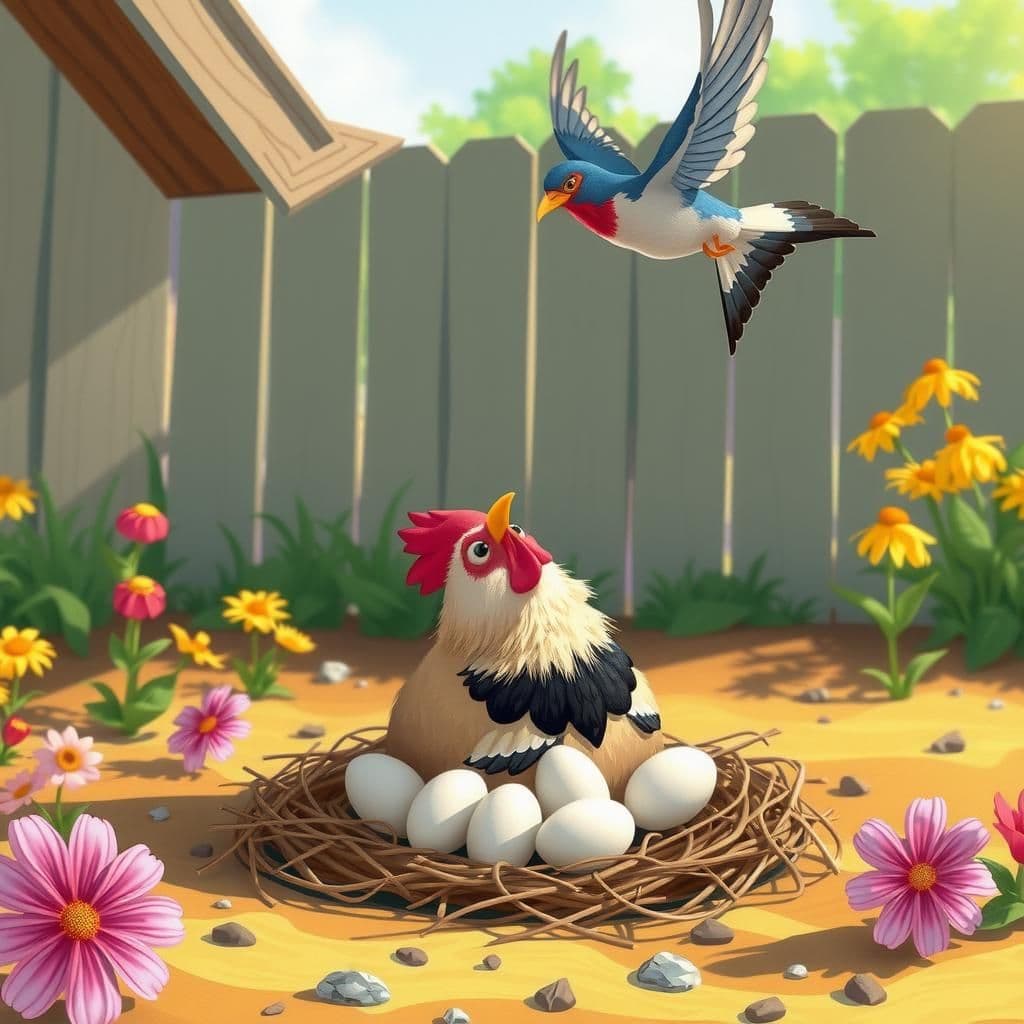The Hen and the Swallow

Story Summary
In "The Hen and the Swallow," a hen nurtures viper eggs, oblivious to the danger they pose, which serves as a timeless moral story highlighting the folly of nurturing harmful beings. The swallow warns her of the impending threat, illustrating a simple lesson from stories about the consequences of ignorance. This fable joins the ranks of popular moral stories, emphasizing the importance of discernment in our choices.
Click to reveal the moral of the story
Be cautious in your kindness, as helping the wrong individuals can lead to harm.
Historical Context
This fable, often attributed to Aesop, reflects themes prevalent in ancient Greek literature, emphasizing the consequences of misguided kindness and the dangers of nurturing harmful entities. The story illustrates a timeless moral lesson about the potential repercussions of one's actions, particularly in the context of loyalty and trust, and has been retold in various forms throughout history, including in the works of later European fabulists like Jean de La Fontaine. Its enduring relevance highlights the universal human experience of unintended consequences stemming from benevolence.
Our Editors Opinion
The story of the hen and the viper serves as a cautionary tale about the dangers of nurturing harmful influences or relationships, often at the expense of one's own well-being. In modern life, a relevant scenario could be a person who invests time and care into a toxic friendship, only to find that the friend's negative behaviors ultimately harm them, illustrating the importance of recognizing and distancing oneself from detrimental associations for personal safety and growth.
You May Also Like

The Snake and the Swallow
In "The Snake and the Swallow," an inspirational story with moral lessons, a swallow raises her young in a court of justice, only to face the threat of a snake eager to eat them. The Just Judge intervenes, ordering the snake to take the chicks to his own home, but ultimately consumes them himself. This childhood story with moral highlights the dangers of misplaced trust and the lessons learned from stories about justice and betrayal.

The Ass and the Grasshoppers
In "The Ass and the Grasshoppers," a Statesman, inspired by the joyful singing of Labourers, seeks to find happiness through honesty, a theme prevalent in motivational stories with moral lessons. However, his newfound commitment leads him to poverty and despair, illustrating that while heartwarming moral stories often celebrate integrity, the consequences can be dire. This short and sweet moral tale serves as a cautionary reminder for students about the complexities of honesty and its impact on life.

The Hen and the Golden Eggs
In this wisdom-packed moral story, a cottager and his wife, driven by greed, decide to kill their Hen that laid a golden egg every day, believing it must contain a treasure inside. However, they learn a valuable lesson when they discover the Hen was just like their other hens, ultimately depriving themselves of their daily wealth. This unique moral story highlights the dangers of impatience and greed, offering impactful lessons learned from stories that entertain while teaching.
Other names for this story
"Viper's Eggs, Hen's Care, Swallow's Warning, From Hen to Viper, The Cautionary Hen, Nurturing Danger, Swallow's Advice, The Hen's Dilemma"
Did You Know?
This fable illustrates the theme of unintended consequences, highlighting how nurturing something harmful can lead to one's own downfall, a cautionary reminder about the risks of misguided compassion.
Subscribe to Daily Stories
Get a new moral story in your inbox every day.